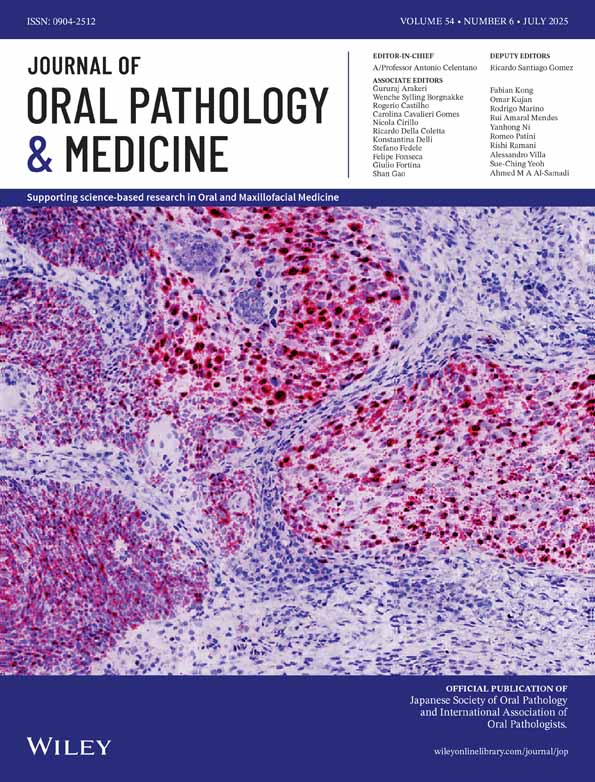The application of stereological methods for studying the effects of differing fixative osmolalities on the intercellular space of oral epithelium. II. Inflamed epithelium
Abstract
Abstract. The effects on normal and mildly burnt oral epithelium of rat palate of commonly used fixatives differing in osmolality and composition were examined quantitatively by the application of a stereological method at the electron microscope level. With five out of six different fixative solutions the intercellular spaces of the burnt epithelium occupied a significantly larger relative volume than in normal epithelium, and the tissue did not respond in the same way as normal epithelium does to differences in fixative solution. This may reflect changes in tissue properties resulting from burning. The differences in size of intercellular spaces between tissues fixed in different solutions were such that burnt tissue fixed in one solution did not always show larger intercellular spaces than normal tissue fixed in another solution. Observations of the ultrastructural changes of inflammation in oral epithelium should therefore always he checked by observations on identically fixed normal tissue.




